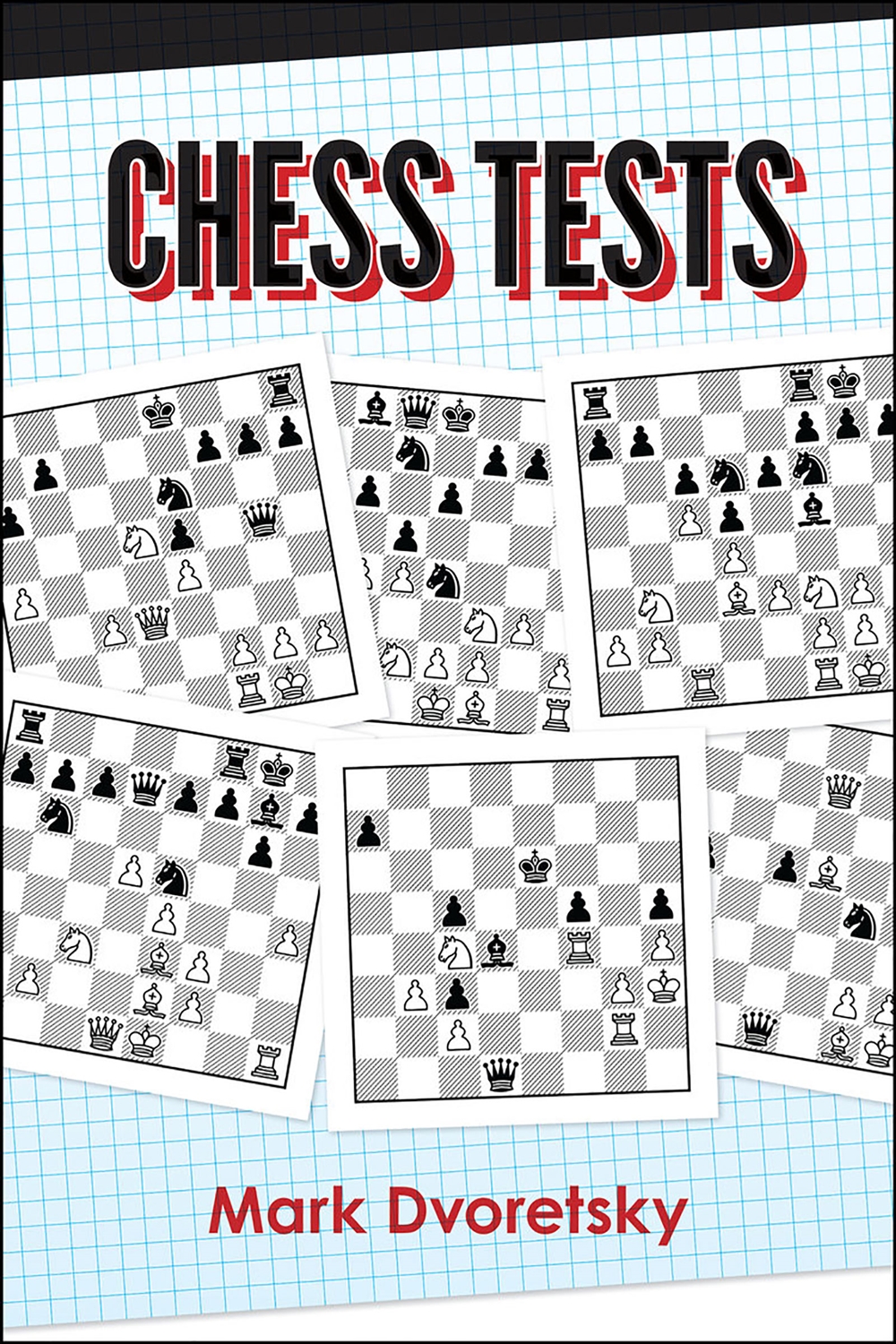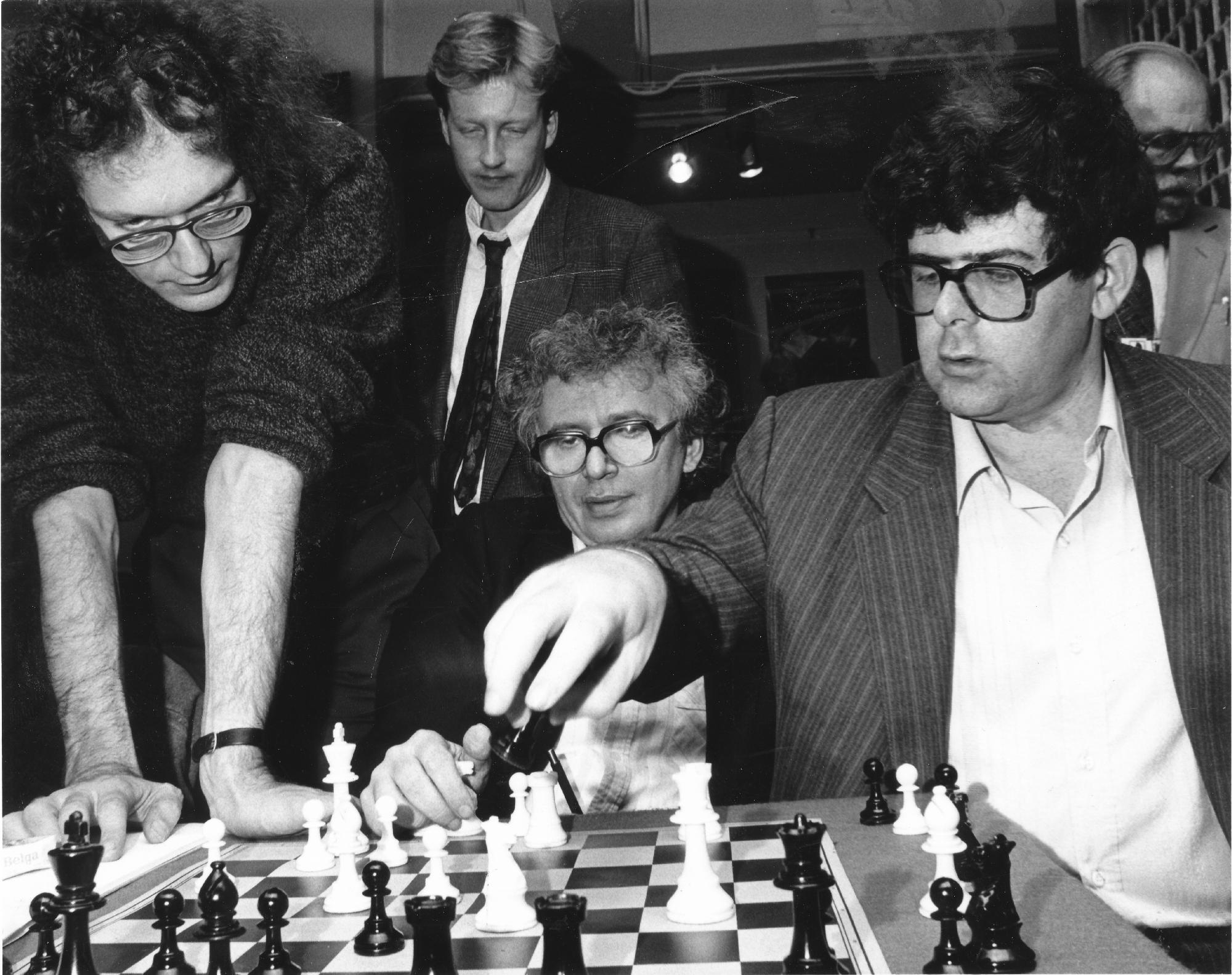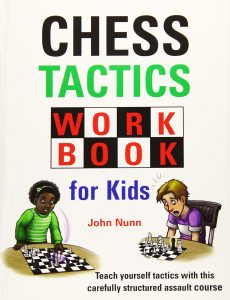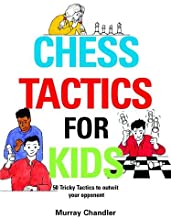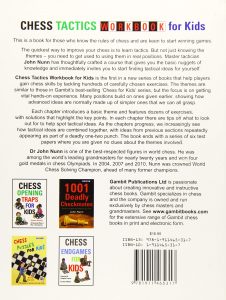Chess Opening Workbook for Kids : Graham Burgess

FIDE Master Graham Burgess needs no introduction to readers of English language chess books ! Minnesota, USA based, Graham has authored more than twenty five books and edited at least 250 and is editorial director of Gambit Publications Ltd. In 1994 Graham set a world record for marathon blitz playing and has been champion of the Danish region of Funen !

Readers may remember “101 Chess Opening Surprises” published in 1998, also by Gambit Publications, was well received and added to GKBs reputation for originality, accuracy and encyclopedic knowledge of openings.
Chess Opening Traps for Kids is the ninth in a series of “for Kids” books and is robustly (!) hardbound in a convenient size such that weights are not need to keep it propped open (unlike some A5 paperbacks) meaning studying with this book is more convenient than with many books. The layout and printing is clear (as you would expect with Gambit) with numerous diagrams. In essence, players under 18 (for whom this book is intended) will find it easy to dip in out of and it can be used without a board (although BCN would always recommend following each game on a “proper” board).
As you would expect with Gambit, the notation is English short form algebraic using figurines for pieces. Each diagram has coordinates and a “whose move it is indicator” (thank-you Gambit !); welcome for the intended junior readership.
This book follows on from the highly regarded (2018) Chess Opening Traps for Kids from the same author and reviewed here
The author divides the material into 11 chapters titled as follows :
- Warm-Ups
- Mate
- Double Attack
- Trapped Pieces
- General Tactics
- Hunting the King
- Development and the Centre
- Castling
- Does Bxh7+ Work?
- Advanced Exercises
- Tests
This is not a book about openings per se. It focuses more on tactics and traps and tactical ideas that happen very early in many games. It is not organised on a per opening variation basis and neither is there an index of openings. If that is what you want then this is not the right book for you.
However, this is much, much more than a book about openings…
Chapters 2 – 9 each kick-off with an introduction to the chapter’s theme followed by (in some cases) 60 example test positions where the theme can be exploited by an accurate move sequence : the student is invited to work-out this sequence. The chapter ends with detailed solutions to each test position.
Chapter 10 are exercises using any of the themes in the previous chapters but randomised and without any clue as to what the theme is. In general these are more challenging and serve as a test of what should have been learnt so far !
Chapter 11 contains 40 test positions some according to theme and rest without a clue. Following the solutions the student is invited to assess their strength at these exercises using a simple score table.
Here is an example from Chapter 3, Double Attack :
Example #5
White has just played 6c4?? Why was that a blunder ?
See the foot of this review for the solution should you need to.
For further insight you may use the “Look Inside” feature from Amazon here. Of course there are many worthy book retailers to be your supplier !
In summary, this is an excellent book with much original material presented in a clear and friendly way and therefore to be recommended. It is an ideal follow-up to Chess Opening Traps for Kids and we would advise studying Chess Opening Traps for Kids first and then move on to this workbook.
One negative comment we would make concerns the cover. “Never judge a book by its cover” we are told and you might look at this book cover and think it was suitable for say primary aged children. I would say not but I would suggest it suitable from secondary aged children. I would say strong juniors from 12 upwards would read this book and enjoy it.
We would like to see an index of openings from which the theme examples were obtained.
The title and cover might, perhaps, put off the adult club player market. However, the content is totally suitable for adult club players upto say 180 ECF or 2000 Elo.
John Upham, Cove, Hampshire, March 30th 2020

Book Details :
- Hardcover : 128 pages
- Publisher: Gambit Publications Ltd. (15th November 2019)
- Language: English
- ISBN-10: 1911465376
- ISBN-13: 978-1911465379
- Product Dimensions: 17.8 x 1.3 x 22.9 cm
Official web site of Gambit Publications Ltd.
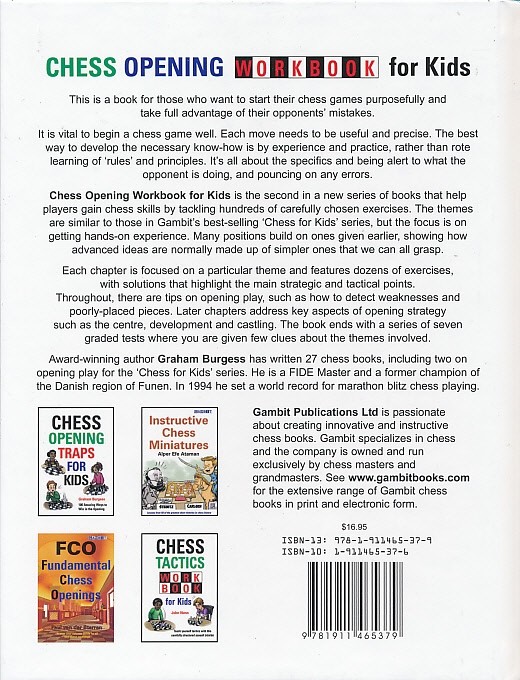
Solution to Example#5
The problem is similar to the Cambridge Springs Trap : 6…dxc4! wins a piece. After 7 Bxc4 Qa5+ the queen check picks up the loose bishop. This has even cropped up at super grandmaster level. The other key point is that White can’t unload his bishop with 7 Bxf6 because 7…cxd3 leaves two white pieces attacked.

